NDIS Home Modifications Sydney
NDIS Home Modifications
NDIS Home Modifications are a vital aspect of the National Disability Insurance Scheme (NDIS) that aims to improve the quality of life for individuals with disabilities. These modifications involve adapting a person's home environment to enhance accessibility and independence. This professional service provides a range of modifications, including bathroom adjustments, wheelchair ramps, and door widening, tailored to meet the specific needs of each individual.
The benefits of NDIS Home Modifications are numerous, as they can greatly improve a person's mobility, safety, and overall well-being. By removing physical barriers within the home, individuals can navigate their living spaces with greater ease and confidence. Furthermore, these modifications can also provide peace of mind to family members and caregivers, knowing that their loved ones are living in a safe and accessible environment. Accessing funding for NDIS Home Modifications is an essential step in making these changes possible, and understanding the process is crucial for individuals seeking this assistance.
Benefits of NDIS Home Modifications
The implementation of NDIS home modifications provides individuals with improved accessibility and independence in their living environment. NDIS home modifications encompass a wide range of changes that can be made to a person's residence to accommodate their specific needs. These modifications can range from minor adjustments to more complex alterations, depending on the individual's requirements.
One of the key benefits of NDIS home modifications is the enhanced accessibility they offer. For individuals with mobility impairments, modifications such as ramps, handrails, and wider doorways can make it easier for them to move around their home independently. Bathroom modifications, such as installing grab bars and accessible showers, can also greatly improve personal care and hygiene routines for those with physical disabilities.
Another advantage of NDIS home modifications is the increased sense of independence they provide. By adapting their living environment to suit their needs, individuals can regain autonomy and perform daily tasks without relying on others. This independence fosters a sense of empowerment and can greatly improve an individual's overall quality of life.
To ensure that the appropriate modifications are made, individuals can work with an NDIS-approved modification provider. These professionals, including modification assessors and building works project managers, can assess the individual's needs, provide modification quotes, and oversee the implementation of the necessary changes.
Types of Home Modifications Available
NDIS home modifications encompass a variety of options for adapting a person's residence to meet their specific needs. These modifications can range from minor changes to more complex structural modifications. When considering home modifications, it is essential to work with a reputable NDIS home modifications provider who can guide you through the process.
Minor home modifications typically involve simple adjustments to improve accessibility and safety, such as installing grab rails, ramps, or handrails. These modifications are usually assessed using a minor home modifications assessment template, which helps determine the necessary changes and associated costs.
On the other hand, complex modifications may require more extensive alterations to the home, such as widening doorways, installing lifts or elevators, or modifying bathrooms and kitchens for wheelchair accessibility. These modifications often require a detailed home modification assessment to accurately identify the specific requirements and estimate the costs involved.
It is important to note that complex modifications may require building permit approval from local authorities. Additionally, the costs for home modifications can vary depending on the current market costs and the complexity of the modifications needed.
To ensure a successful home modification process, it is crucial to engage experienced modification providers who have expertise in both minor and complex home modifications assessments. They can help navigate the process, ensure compliance with regulations, and deliver modifications that meet the individual's needs.
Accessing Funding for Home Modifications
Access to funding for home modifications can be obtained through various channels. For people with disabilities, the National Disability Insurance Scheme (NDIS) is a primary source of funding. The NDIS provides financial assistance specifically for home modifications that promote accessibility and independence. These modifications may include the installation of shower chairs, stepless showers, and grab rails.
To access NDIS funding for home modifications, individuals need to have an approved NDIS plan. They can then work with an NDIS registered provider of modification services. The provider will assess the person's needs, develop a plan, and submit a quote for the modifications to the NDIS for approval.
In some cases, building approvals may be required before the modifications can take place. An independent building certifier may need to assess the plans and ensure compliance with relevant building codes and regulations.
It is important to note that the NDIS generally does not fund routine repairs or maintenance, but rather modifications that are necessary to meet the specific needs of the individual.
In addition to the NDIS, other sources of funding for home modifications may include state or territory government programs, local councils, or charitable organizations. These programs may have specific eligibility criteria and funding limits, so it is important to research and explore all available options.
NDIS Home Modifications for the Elderly
Elderly individuals can benefit from NDIS-funded home modifications that enhance accessibility and promote independence. These modifications aim to improve the daily living of elderly individuals by addressing their specific needs and challenges. Occupational Therapy Australia plays a crucial role in assessing the functional capacity of elderly individuals and determining the appropriate modifications required. The assessment takes into consideration various factors, including the individual's risk level, care arrangements, and the cost of modifications.
The effectiveness of a modification is determined by its ability to meet the individual's needs and enhance their independence. It is important to ensure that the modification is legally compliant and meets all relevant safety standards. Non-structural modifications, such as grab rails and handrails, are commonly implemented to improve accessibility and reduce the risk of falls. However, depending on the individual's needs, additional modifications may be necessary, such as ramps, stairlifts, or bathroom modifications.
NDIS Bathroom Modifications for Accessibility
Bathroom modifications for improved accessibility are an essential aspect of NDIS-funded home modifications for individuals with specific mobility needs. These modifications aim to create a safe and functional bathroom that meets the unique requirements of the person with a disability. When considering bathroom modifications for accessibility, it is crucial to consult with a building construction practitioner who has expertise in designing accessible spaces.
To ensure a fully accessible bathroom, several key modifications may be necessary. These can include installing permanent ramps to provide wheelchair access, modifying load-bearing walls to create wider doorways, and incorporating accessible tapware and fixtures. Additionally, assistive technology and home modification options such as grab bars, shower seats, and raised toilet seats can further enhance accessibility.
It is important to note that not all bathroom modifications need to be expensive. Low-cost modifications can still greatly improve accessibility. Simple changes like installing non-slip flooring, improving lighting, and adjusting the height of bathroom fixtures can make a significant difference in creating a safer and more accessible environment.
While bathroom modifications are crucial, it is also essential to consider other areas of the home. Bedroom modifications, for example, can include widening doorways, installing handrails, and ensuring adequate space for maneuverability. Taking a holistic approach to NDIS home modifications ensures that individuals with specific mobility needs can live independently and safely in their own homes.
House Modifications for Individuals With Disabilities
When considering home modifications for individuals with disabilities, it is important to expand the focus beyond just bathroom accessibility. While bathroom modifications are crucial, there are other areas of the house that also require attention to meet the diverse needs of individuals with disabilities. Access modifications can include basic changes like installing grab bars or ramps, as well as more complex home modification projects such as widening doorways or adding stairlifts. Complicated modifications may involve electronic modifications to improve accessibility, such as voice-activated controls or automated doors. Experienced home modification builders can offer a range of building solutions to address specific needs.
Kitchen modifications are another important aspect to consider. Lower countertops, accessible storage, and lever-handled faucets can greatly enhance independence and functionality in the kitchen. Non-structural home modifications, such as lighting adjustments or flooring changes, can also contribute to a safer and more accessible home environment. It is worth noting that not all modifications need to be expensive or elaborate. Lower-cost modifications, such as installing handrails or lever-style door handles, can make a significant difference in accessibility.
Enhancing Home Accessibility Through Modifications
To improve home accessibility, implementing modifications is essential. Home modifications are changes made to a home to make it safer, more accessible, and suitable for individuals with disabilities. These modifications can range from simple adjustments to extensive renovations, depending on the specific needs of the individual.
To ensure the correct home modification assessment is carried out, a modification assessment template is used. This template helps identify the specific modification type required and assesses the level of modification support needed. The assessment also takes into account the modification budget levels, ranging from minor home modification budgets to more extensive modifications with expensive finishes.
Based on the results of the assessment, modification recommendations are made. These recommendations may include installing ramps or stairlifts to improve accessibility for individuals with mobility impairments, modifying doorways or bathroom fixtures for individuals with physical disabilities, or adding grab bars and handrails to aid in daily tasks.
Key Considerations When Planning Home Modifications
After carrying out a modification assessment and receiving recommendations, it is vital to consider several key factors when planning home modifications for individuals with disabilities. Custom-built changes should be made based on the specific needs and requirements of the individual. This ensures that the modifications are tailored to their unique circumstances and promote independence and accessibility.
When planning home modifications, it is crucial to consult with a modification service provider who specializes in disability modifications. They can assist in creating a modification plan that addresses the specific needs of the individual. These providers can also offer guidance on the best modification installation practices to ensure safety and functionality.
Additionally, individuals and their families may benefit from participating in modification courses. These courses provide valuable information on available modification options, funding sources, and the overall process of planning and implementing home modifications.
For non-structural minor home modifications, individuals can consider making changes themselves. However, it is important to ensure that these modifications comply with safety standards and regulations. Consulting with a modification service provider can help individuals navigate these requirements and ensure the modifications are done correctly.
Frequently Asked Questions
How Long Does It Typically Take to Complete NDIS Home Modifications?
The time it takes to complete NDIS home modifications varies depending on the scope of work, availability of resources, and coordination among stakeholders. Generally, it can range from a few weeks to several months.
Are There Any Specific Guidelines or Regulations That Need to Be Followed When Making Home Modifications Through the Ndis?
When making home modifications through the NDIS, it is important to follow specific guidelines and regulations to ensure compliance and safety standards. These guidelines help to ensure that the modifications meet the needs of the individual and are carried out in a professional and efficient manner.
Can Individuals Choose Their Own Contractors or Builders for NDIS Home Modifications?
Individuals have the freedom to choose their own contractors or builders for home modifications. This allows them to find professionals who understand their specific needs and preferences, ensuring the best outcome for their NDIS-funded modifications.
Are There Any Limitations on the Types of Home Modifications That Can Be Funded Through the Ndis?
There are certain parameters in place regarding the scope of home modifications that can be funded through the NDIS. These guidelines ensure that the modifications align with the objectives and principles of the NDIS framework.
What Happens if the Cost of the Home Modifications Exceeds the Allocated Funding From the Ndis?
If the cost of home modifications exceeds the allocated funding from the NDIS, individuals may be required to cover the additional expenses themselves or explore alternative funding options such as seeking financial assistance or grants.
Home Modifications for An Easier & Safer Life
Core Assist will help make your home more accessible and appropriate for your family members with disabilities.
NDIS Home Modifications
At CORE ASSIST we care about making your home suit your specific needs. It may be necessary to make temporary or permanent adjustments to help everyone achieve their personal growth and maintain a healthy lifestyle. Are you ready to learn about home changes that will provide a smoother transition to independence.


Wheelchair access
Moving around freely in a wheelchair may not be an option for many individuals in their homes. Having a wheelchair ramp, wider doorways, wider hallways, handrails, or a chair lift to transport people to the second landing are just some of the wheelchair friendly features that can be implemented into you home.
Our qualified staff and professionals will make sure that all the appropriate measurements are made and the correct equipment is used to make those modifications possible.
Lighting
For people with a visual impairment, poor lighting can be a major obstacle. It can result in the individual bumping into things, tripping, or knocking things over. It can also cause a person to fall and sustain a serious injury. Lighting outlets and switches that are out of reach add to the difficulty of the situation.
Core Assist will install supplemental lighting fixtures to make it easier for people to move comfortable and safely around their home. Automated lighting and accessible switches can also help. We aim to provide you with long term solutions to make life brighter.

Floor And Décor Items
Slippery flooring or non-fixed furniture are other possible factors that might cause falls among the elderly or disabled persons. The individual may have limited or unsafe movement around their home because of poorly fixed furniture, rugs, or carpets.
Core Assist will do the maintenance and installation of rubber backing to the carpets and rugs. Also recommend floor treatments and traction strips to help prevent falls or trips.
Staircases
Core Assist will assist you in the installation of glides, additional handrails and stairlifts so that you can confidently climb the stairs and move easily up and down your own home. In addition, we will upgrade and improve the lighting in the stairs to alleviate any further problems.
Threshold
Falls are a hazard for the disabled community because of uneven and textured floors. Due to their navigational difficulties, they may purposely stop mobilising in order to avoid exerting extra energy. A change in flooring from hardwood to carpet, or vice versa, can be a difficult transition.
Core Assist will level the floor of the house, making it more accessible and easy to move around. Ramps will be smoothed out, and no area will be left with a steep enough gradient. It is a promise from us!

Bathroom
Falling on a slippery wet floor, climbing in and out of the bathtub and even going to the toilet can be a huge task for an individual with a disability.
Core Assist will install walk-in showers so the disabled person can roll a walker or wheelchair into the shower. The floor will also be coated with a non-slip layer to help reduce falls.
Core Assist will provide you with a cost estimate
Disabled housemates are constantly adjusting to new and different circumstances. So we should strive to collaborate for their safety and assist them in carrying out tasks so that they can live independently despite their physical limitations.


